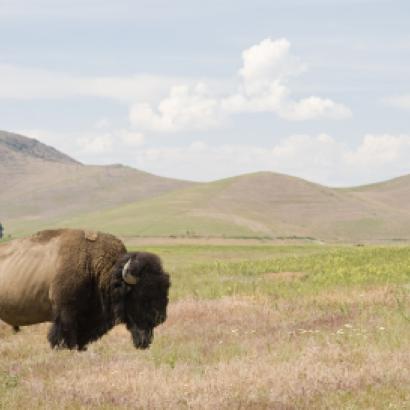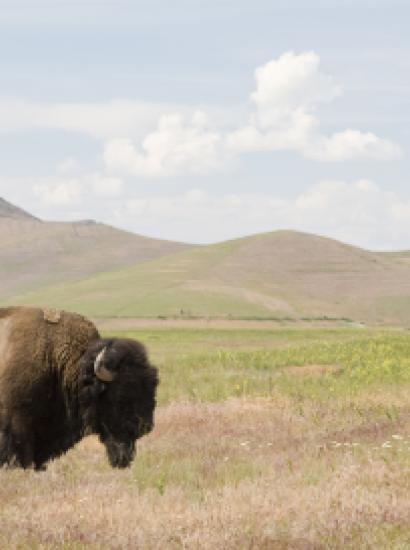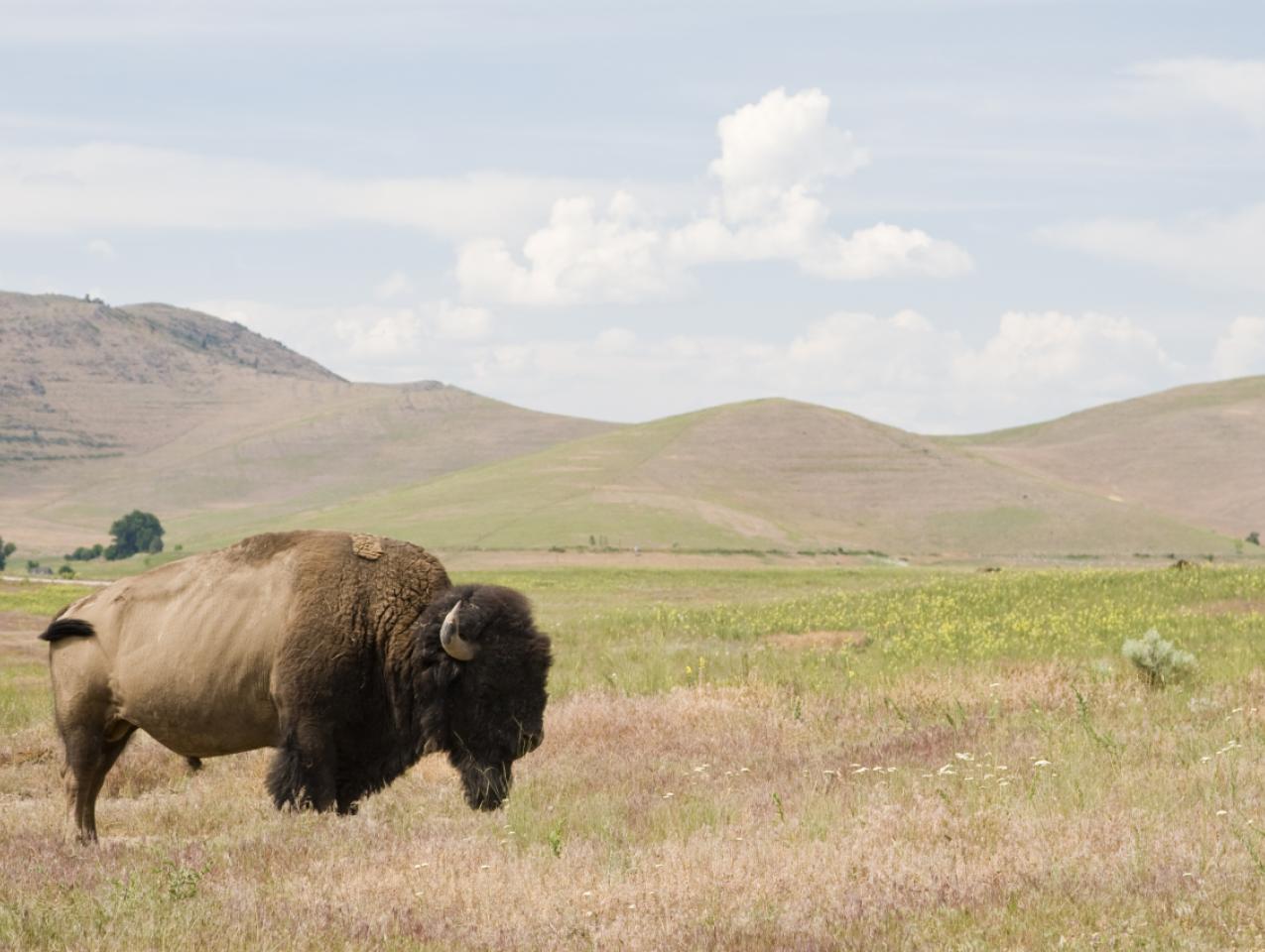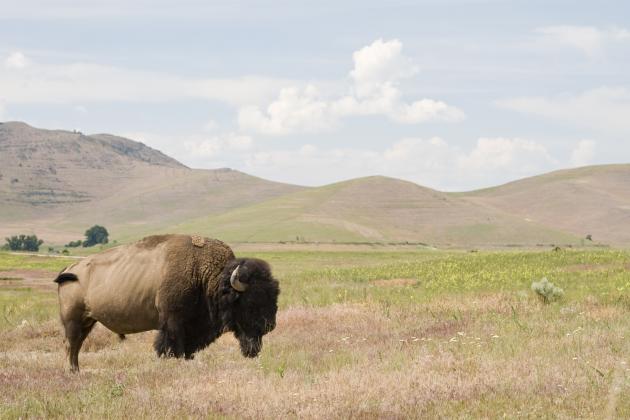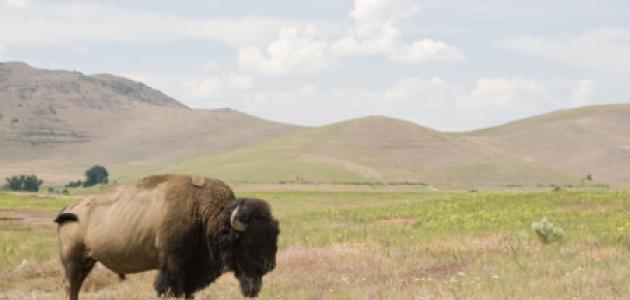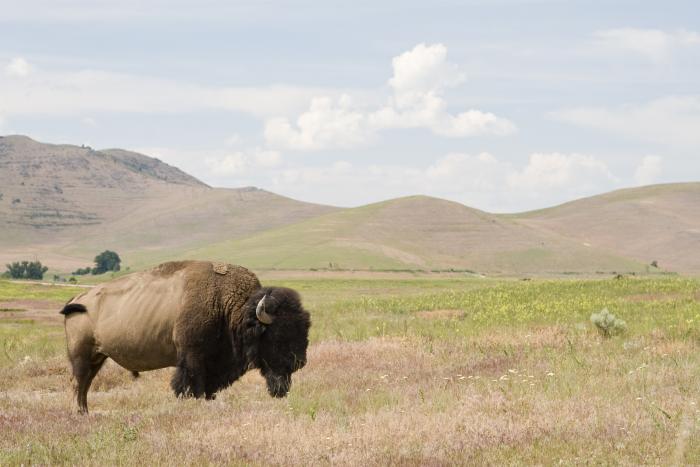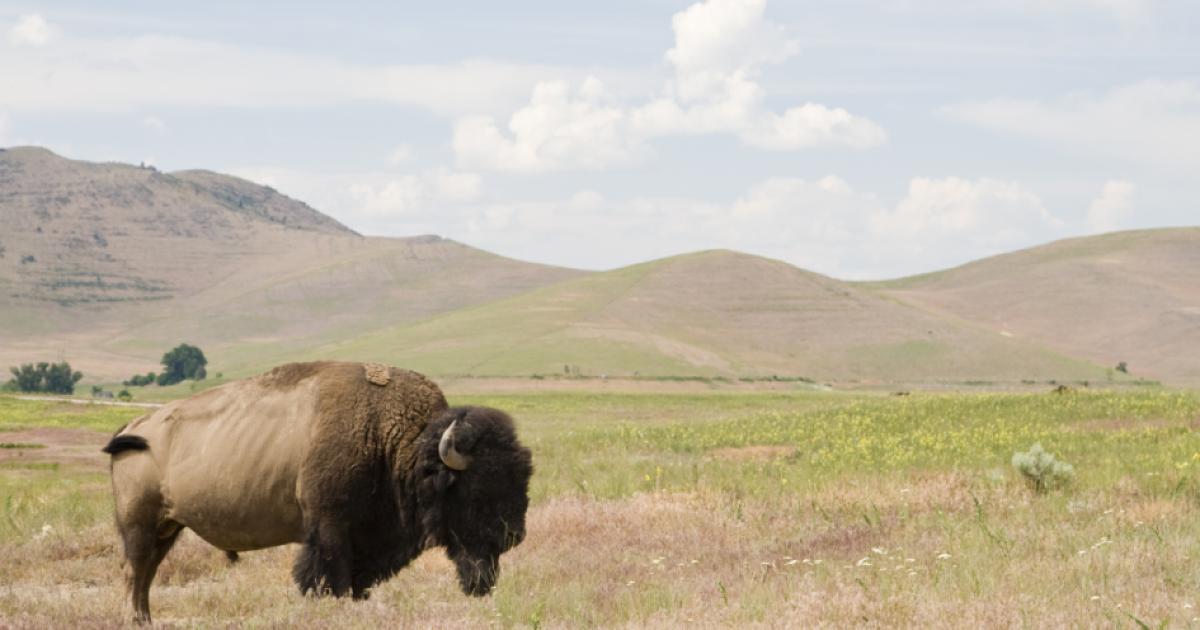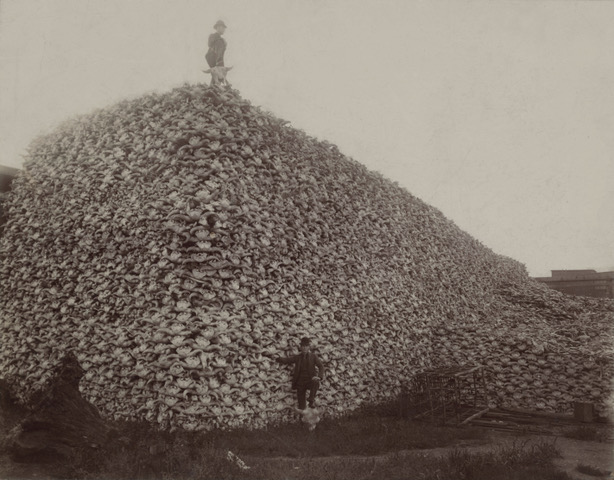
- Economics
Documentarian Ken Burns has produced another blockbuster—The American Buffalo—following a previous one focused on the American West, The National Parks: America’s Best Idea. PBS viewers who admire his work will love the romantic depiction of the American Indian. Anyone who watches the two-part, four-hour documentary will be amazed by Burns’s ability to bring history to life: contemporary Native Americans recite quotes from their ancestors amid vivid paintings by Western artists George Catlin and Charles Russell, photographs by Edward Curtis, and awe-inspiring landscapes. It is easy to imagine the stories: Indians starving in the teepees, thousands of buffalo crossing in front of a train and stopping it for hours, and hide-hunters shooting buffalo until the last one is gone. The viewer can almost smell the meat left to rot.
Viewers also will be repulsed by the violence and carnage white colonists brought to the American frontier. In contrast to “America’s best idea,” The American Buffalo depicts the industrial age as America’s worst idea. As Burns puts it, the slaughter of the buffalo—more properly known as bison—was “a repudiation of the very idea of America.” Or as Josh Alvarez, a senior editor for Texas Monthly, wrote, “Ken Burns’s ‘The American Buffalo’ isn’t really about bison. It’s about the violence that white settlers wrought upon the West and the path to redemption.”
Behind the veil of living history, however, much is not told, thereby distorting the history of American Indians and their relationship to the buffalo. Burns’s epic depicts the injustices that European colonists wrought upon Native Americans, including the bringing of the buffalo to near extinction to make it easier to confine Indians to reservations. But federal law continues to treat Native Americans unjustly today, long after the buffalo populations have recovered.
A law passed in 1906 refers to Indians as incompetent and incapable. Further back, in 1881, the US Supreme Court declared the relationship of the Indian to the government to be “like that of a ward to his guardian.” Because Indians are considered wards, federal law still holds most Indian lands in trust, managed by the Bureau of Indian Affairs. That part of the Indians’ story deserves more emphasis in the media, including Burns’s epics. (Indeed, that is the major theme of a recent Martin Scorsese film, Killers of the Flower Moon.)
The American Buffalo contends that Indians revered the buffalo as a gift from the creator and displayed that reverence when they killed and butchered them. It is important to separate the romanticism from the reality of American Indian history.
To make that separation, this essay is a guide to The American Buffalo that shows that American Indians were, and are, rational and capable human beings. Incentives changed for Native Americans several times before European colonization and several more times after it. For the colonizers, incentives also came into play after crossing the ocean to find a continent with abundant land and resources. Seen in this way, Burns’s documentary becomes a story of rational human behavior rather than one of either worship of nature’s bounty or industrial greed.
The first inhabitants
As any grammar school student knows, Europeans landing on the west side of the Atlantic Ocean did not “discover” a “new world.” For eons, the original discoverers of North America had been crossing the Pacific Ocean, whether by canoes or a land bridge across the Bering Strait, to thrive on the resources they found. In some cases, they developed institutions that promoted sustainable use of the resources they found, and in others, they rationally harvested resources to unsustainable levels.
Pleistocene overkill: During the Pleistocene era, dozens of large mammals went extinct on a grander scale than the American bison did later. Archaeologists have debated the causes of these large-scale extinctions, with many contending that ecological factors caused their demise. The debate, no doubt, will continue as new data and methods of analysis evolve, and conclusions may vary depending on disciplines.
Some researchers adhere to Paul Martin’s hypothesis that humans hunted megafauna to extinction. Two recent papers lean in the direction of Martin’s hypothesis. One group tested Martin’s hypothesis by correlating radiocarbon dates of extinctions with the arrival of humans from eastern Beringia. They conclude, “For areas south of Beringia, these estimates correspond well with the first significant evidence for human presence and are consistent with the predictions of the overkill hypothesis.” The second paper correlated citations of Martin’s “overkill” theory with publications by archaeologists and ecologists. Their data show that “archaeologists cite overkill as one in a combination of causal mechanisms for the extinctions,” compared to ecologists who were “more likely to accept that humans caused the extinctions.” They suggest the data support “the argument that humans have ‘always’ been somewhat selfish overconsumers. The Pleistocene rewilding and de-extinction movement are built upon these perspectives.” That is, the first Native Americans who caused the Pleistocene overkill and the hide hunters who brought bison to near extinction were both “somewhat selfish ‘overconsumers.’ ”
Through an economic lens, however, neither Pleistocene overkill nor the nineteenth-century bison slaughters were due to overconsumption. Rather, the en masse killings of Pleistocene megafauna and bison were the rational, least-cost way of obtaining food for Native Americans and for obtaining hides for European hunters. Martin’s Pleistocene overkill hypothesis was based on the idea that the ancient Clovis people could surround slow-moving mammals and drive spears into them. Moreover, killing the huge beasts was a way of protecting themselves from the dangers that megafauna presented. Once the huge animals were on the ground, there was more meat than the hunters could consume, so after killing they moved on. In other words, it was cheaper to kill large numbers of woolly mammoths than it was to “sustainably” harvest them, and the same would be true for bison. Simply put, Native Americans and European-American bison hunters were utilizing the technology they had and captured the produce—meat or hides—in the most economical way.
Pedestrian hunting: The American Buffalo shows a sickening slaughter by bison hide hunters, but never mentions the carnage of a buffalo herd being stampeded over a cliff by Indians before the arrival of the horse in the seventeenth century or later, depending on the tribe. Consider the remains at a buffalo jump or pishkun, the Blackfeet word for “deep kettle of blood.” Before the introduction of horses, Plains Indians lured bison herds into drive lines created by human-made stone cairns that could be miles long. Young men called buffalo runners would push or lure the herd to a full gallop, giving the animals no choice but to thunder toward a cliff twenty to thirty feet high and plunge to their death with the weight of the herd behind them. If they did not die from the fall, they were shot with arrows, stabbed with spears, or beaten to death with clubs. At jumps, such as the Madison jump at the headwaters of the Missouri River in Montana, so much buffalo blood was shed that the grass is a brighter green than surrounding grass because of the nitrogen left in the soil.
With so many carcasses piled at the bottom of the cliff, there was no way a band of Indians could process all the meat, hides, bones, or horns. It is true that Plains Indians used every part of the buffalo, but they could not use every part of every animal. At almost every jump it is possible to find skulls, bones, and arrowheads. One of the most famous pishkuns is Head-Smashed-In, a jump in Alberta, Canada, where bone piles are forty feet deep.
To dramatize the results of hide hunting, Burns shows a well-known image of a huge pile of buffalo skulls (photo 1). That pile is little different from the remains at buffalo jumps that were used over eons, before European settlers arrived. In the first image, the skulls are collected on the Plains for fertilizer in the aftermath of hide hunting. The second image (photo 2) is a display of skulls at Head-Smashed-In.
Photo 1

Photo 2

Neither is an example of “overconsumption.” Both are examples of Indians and hide hunters responding to the constraints they faced, given the tools at hand. We can admonish both for not acting differently as we see it, but in reality both were rational actors.
Beaver vs. buffalo: Beaver offer a sharp contrast to the story of the bison. Before trade with Europeans, Indians hunted the beaver primarily for food and for a small number of furs used domestically. The potential for them to be “selfish overconsumers” existed, but the demand was low relative to the supply. There were no landowning units or family trapping territories; “instead all resources were ‘free goods,’ ” historians Edward Rogers and Eleanor Leacock explained in the Handbook of North American Indians.
But “with the emergence of a full-fledged trapping economy, usufructuary right to trap in specific territories became established,” Rogers and Leacock wrote. Once trade with Europeans was established and demand for beaver fur used in hats grew, the price of pelts rose, increasing trapping pressure. The difference between bison and beaver was that beaver were less migratory, making it easier to establish exclusive trapping territories. Indians limited access to beaver trapping territories with rules—property rights—that specified when, where, and by whom beaver could be harvested. An anonymous account from 1723 notes that Indians marked “off the hunting ground selected by them by blazing the trees with their crests so that they may never encroach on each other,” wrote Harold Demsetz. If a beaver was needed for subsistence, it could be taken by a nonowner, but the valuable hide had to be left for the owner. If the hide was not left, the trespasser could be killed.
In contrast to buffalo hide hunting, the demand for beaver pelts led to sustainable harvesting. The difference between buffalo and beaver illustrates how the costs of defining and enforcing property rights affect decimation or conservation.
Equestrian hunting: After the arrival of the horse, Indian tribal territories were in flux as tribes with horses dominated others, taking over their territories. Tribes vied for control of bison territories by using fire as a way of luring the buffalo from enemy territories. As Charles Russell’s painting Blackfeet Burning Crow Buffalo Range illustrates, fire was used to improve grazing lands in Blackfeet territory to lure bison herds from Crow territory. Describing how “Indigenous Fire Practices Shaped our Land,” the US Park Service explains:
By burning an area in the fall, the bison could be excluded from that area by removing any forage that could be used by the bison during the winter months. This forced the bison to graze in unburned areas. These could be areas closer to ideal winter camp sites and could help improve hunting success. In the spring, the same areas burned in the fall would have excellent grazing and provide good hunting opportunities.
These practices were effective as long as territorial boundaries were clear, as Charles Kay’s data on the bison density in the interface between tribal territories suggests. If the boundaries were unclear, members of different tribes could simply follow the herd much as the hide hunters did.
But Indian rights to buffalo in their territories became insecure, as Burns points out, because the US Army did not enforce treaties. Such agreements ostensibly restricted where hide hunters could operate, but the treaties were seldom enforced. Rather, Congress allowed and even encouraged hide hunters to encroach on reservations.
Buffalo or beef
The description of the near extinction of buffalo is often referred to by economists as an example of “the tragedy of the commons,” meaning that an unowned resource will be harvested without regard to its future value. P. J. Hill, however, corrects this fallacy in the context of bison by pointing out that the value of wildlife resources results from a combination of wildlife and its habitat. In the case of beaver, property rights to trapping territories encouraged maximizing the combined value. Because bison roamed across Indian territorial boundaries and because hide hunters could not be kept out of those territories, there was no owner of the habitat to maximize the combined value.
If the bison could have been confined to a specific territory, that area might have been defended, allowing the defender to capture the combined value of bison and land. But such a defense was impossible given the size and mobility of the beasts. (As a manager of one of Ted Turner’s bison ranches put it, “You can herd a bison wherever it wants to go.”)
Moreover, Hill contends that “even if there had existed private property rights to bison on the Great Plains in the latter part of the nineteenth century, they would have been exterminated almost as rapidly as they were under open access.” This is because “the resource that had an opportunity cost was the grass of the Great Plains, which could be used to produce cattle as well as bison.” The essence of this argument is that cattle and sheep provided an alternative animal that could convert the abundant grass, water, and sunshine of the Great Plains into meat and leather more economically than bison could. They could be controlled either by cowboys or herders who “corralled” the livestock. Later, barbed wire provided an even cheaper way of enforcing property rights to livestock and land.
Conclusion
We should respect the history of Native Americans not because they had a mystical relationship to the Earth, which they did, but because they thrived on the resources that were at hand. We should honor them as rational humans who sometimes decimated wild populations—for example, the woolly mammoth—sometimes harvested them sustainably—beaver in the Northeast and salmon in the Pacific Northwest—and sometimes enhanced them—such as berry patches on the Plains and clam gardens in the Pacific Northwest.
Too often, as in Ken Burns’s The American Buffalo, we criticize Western traditions and institutions as lacking respect for the environment while ignoring the fact that Native Americans were little different from the rest of the world’s inhabitants. Crow tribal member Bill Yellowtail eloquently describes the Crow Indians who “thrived through history by relying on these innate strengths: strategic pragmatism, proactive adaptation, statesmanship and shrewd diplomacy, aggressive entrepreneurship, commitment to cultural identity, the dignity of self-sufficiency.” The characteristics he lists are no different from what has nourished “the wealth of nations,” in Adam Smith’s phrase, around the world since time immemorial.
The Crow, like many tribes, could have continued thriving based on their entrepreneurial spirit, but the federal government stripped them of their “dignity of self-sufficiency,” to use Bill Yellowtail’s words. Federal policy confined them to reservations, violated their treaties, and cast them as perpetual dependents.
Ken Burns’s story of the American buffalo has much to say about the stripping of dignity of self-sufficiency as buffalo were hunted to near extinction and hunters were allowed, and at times encouraged, to violate tribal rights to territories. However, this story of demise fails to capture why tribes thrived and could thrive again. Bill Yellowtail captures what is missed: “The power of the tribal community is founded on the collective energy of strong, self-sufficient, self-initiating, entrepreneurial, independent, healthful, and therefore powerful independent persons. Human beings. Indians.”
Native Americans should have the same opportunities to exploit their resources and talents that so many immigrants to the Americas have had.








